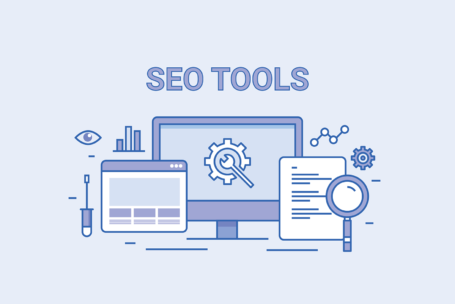In the vast expanse of the internet, search engines serve as our guiding beacons. They help us navigate through the endless digital labyrinth. But, have you ever wondered how these search engines gather information from websites, indexing and organizing the web’s content to provide relevant search results? Enter the fascinating and complex world of web crawling technology.
Most SEO services know the importance this technology as website rankings depend on it. As a web admin or site owner, you too should know the basics. Here is how search engines go about crawling websites using bots or algorithms.
The Quest for Fresh Content: Web Crawlers at Work
Web crawling is the backbone of search engines. It enables them to explore, discover, and catalog the vast amount of information available online. Search engine crawlers, also known as spiders or bots, are specialized programs that tirelessly roam the web, following links and systematically visiting websites.
At the heart of web crawling lies a process known as fetching. During fetching, crawlers send HTTP requests to web servers, simulating the actions of a regular web browser. The server responds with the requested webpage, which is then parsed and processed for further analysis.
Starting Point: Seed URLs and Sitemaps
Every crawling adventure begins with a starting point. Search engines typically rely on seed URLs to kickstart the crawling process. These seed URLs can be popular websites, user-submitted URLs, or previous crawl results. Additionally, website owners can provide search engines with XML sitemaps, which act as roadmaps, guiding crawlers to different sections of the website.
Sitemaps offer valuable insights into a website’s structure. That ensures crawlers don’t miss important pages or sections. They provide information such as the URL hierarchy, last modification date, and the frequency of content updates. This aids crawlers to prioritize their crawling efforts.
What Technology do Search Engines Use to ‘Crawl’ Websites?
Crawling algorithms play a crucial role in determining which pages to visit and how frequently. These algorithms consider various factors to prioritize the crawling process efficiently. Key considerations include the popularity of the website, the frequency of content updates, and the number of inbound and outbound links.
For instance, a highly reputable website with frequent updates and numerous backlinks may receive more attention from crawlers compared to a less popular site with fewer updates. These algorithms ensure that search engines focus on crawling and indexing valuable and relevant content.
Discovering and Following Links: A Web of Connections
Links serve as the lifeblood of the internet, connecting websites and forming an intricate web of information. Crawlers leverage hyperlinks to navigate from one webpage to another, systematically traversing the digital landscape. Each link encountered during crawling leads the crawler to a new page. This continues until no new links are found or a predefined crawling limit is reached.
While following links is a fundamental aspect of crawling, it poses challenges as well. Crawlers must handle various link types, such as textual links, image links, and JavaScript-based links. Additionally, they need to ensure they do not fall into link traps or engage in excessive link crawling, which could lead to poor user experience or strain website resources.
Crawling Etiquette: Robots.txt and Crawl Delay
Just as there are rules and etiquettes in the physical world, the web also has its own set of guidelines. Website owners can use a file called robots.txt to communicate with search engine crawlers. This file specifies which parts of their website should or should not be crawled. This protocol allows website owners to exercise control over the crawling process.
Additionally, the crawl delay directive allows website owners to control the rate at which crawlers access their site. By specifying a delay between successive requests, website owners can ensure that the crawling process does not overwhelm their servers or impact the site’s performance.
Crawling Challenges: Dynamic Content and Infinite Depths
The web is a dynamic realm, with constantly changing content and evolving structures. Crawlers face challenges when dealing with dynamically generated pages. That is because they may require specific user input or interact with databases. While crawlers can handle certain types of dynamic content, such as JavaScript-based websites, more complex interactions may pose difficulties.
Moreover, the depth of the web poses a challenge for crawlers. With billions of web pages interconnected through intricate links, it is virtually impossible for crawlers to explore every nook and cranny. Crawling algorithms employ strategies like breadth-first or depth-first crawling to navigate the web efficiently. This enables the crawling bots to balance depth and breadth of coverage.
Web Crawl Frequency: Keeping Up with Updates
To ensure search engines provide up-to-date results, crawlers revisit websites periodically. The frequency of crawls varies based on certain factors. These include factors such as the website’s popularity, content freshness, and the frequency of updates. Well-established websites with regular content updates are crawled more frequently. On the other hand, less active sites may experience longer intervals between crawls.
Crawl scheduling involves striking a balance between providing timely results and minimizing the impact on website resources. Search engines employ sophisticated mechanisms to determine the optimal crawl frequency for each website. This allows them to keep their index as current as possible.
Respectful Crawling: Crawl Budget and Politeness
Search engines allocate a crawl budget. That determines the amount of resources dedicated to crawling each website. This budget considers factors such as server capacity, website importance, and historical data. To be polite and respectful to website owners, search engines avoid overwhelming servers with an excessive number of requests.
Crawl budget management involves prioritizing crawling efforts. That ensures that crawling bots visit valuable. As a result, it avoids excessive crawl requests that may strain website resources or lead to potential penalties. By managing the crawl budget efficiently, search engines can maintain a mutually beneficial relationship with website owners.
The Bottom Line
Search engine crawling is an intricate and multifaceted process powered by sophisticated technology. Experienced SEO services take this crawling into consideration. That allows them to follow the rules and ensure quick indexing and high SERPs.



